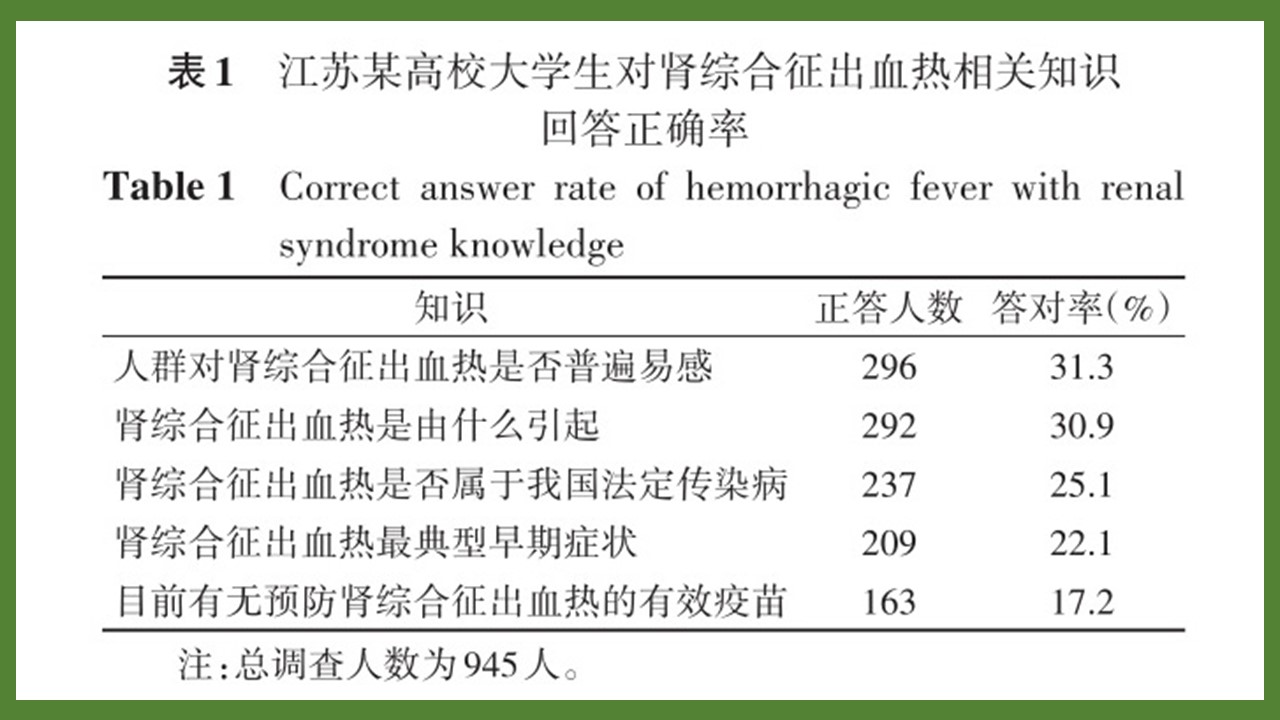 PDF(497 KB)
PDF(497 KB)


江苏省某高校医学生与非医学生对肾综合征出血热的知信行调查
王强, 钱玲媛, 王健龙, 景晨烨, 武文珏, 汤靖文, 张守刚
中国媒介生物学及控制杂志 ›› 2022, Vol. 33 ›› Issue (2) : 297-300.
 PDF(497 KB)
PDF(497 KB)
 PDF(497 KB)
PDF(497 KB)
江苏省某高校医学生与非医学生对肾综合征出血热的知信行调查
 ({{custom_author.role_cn}}), {{javascript:window.custom_author_cn_index++;}}
({{custom_author.role_cn}}), {{javascript:window.custom_author_cn_index++;}}A survey of knowledge, attitude and practice on hemorrhagic fever with renal syndrome among medical students and non-medical students in a university of Jiangsu province, China
 ({{custom_author.role_en}}), {{javascript:window.custom_author_en_index++;}}
({{custom_author.role_en}}), {{javascript:window.custom_author_en_index++;}}
| {{custom_ref.label}} |
{{custom_citation.content}}
{{custom_citation.annotation}}
|
/
| 〈 |
|
〉 |